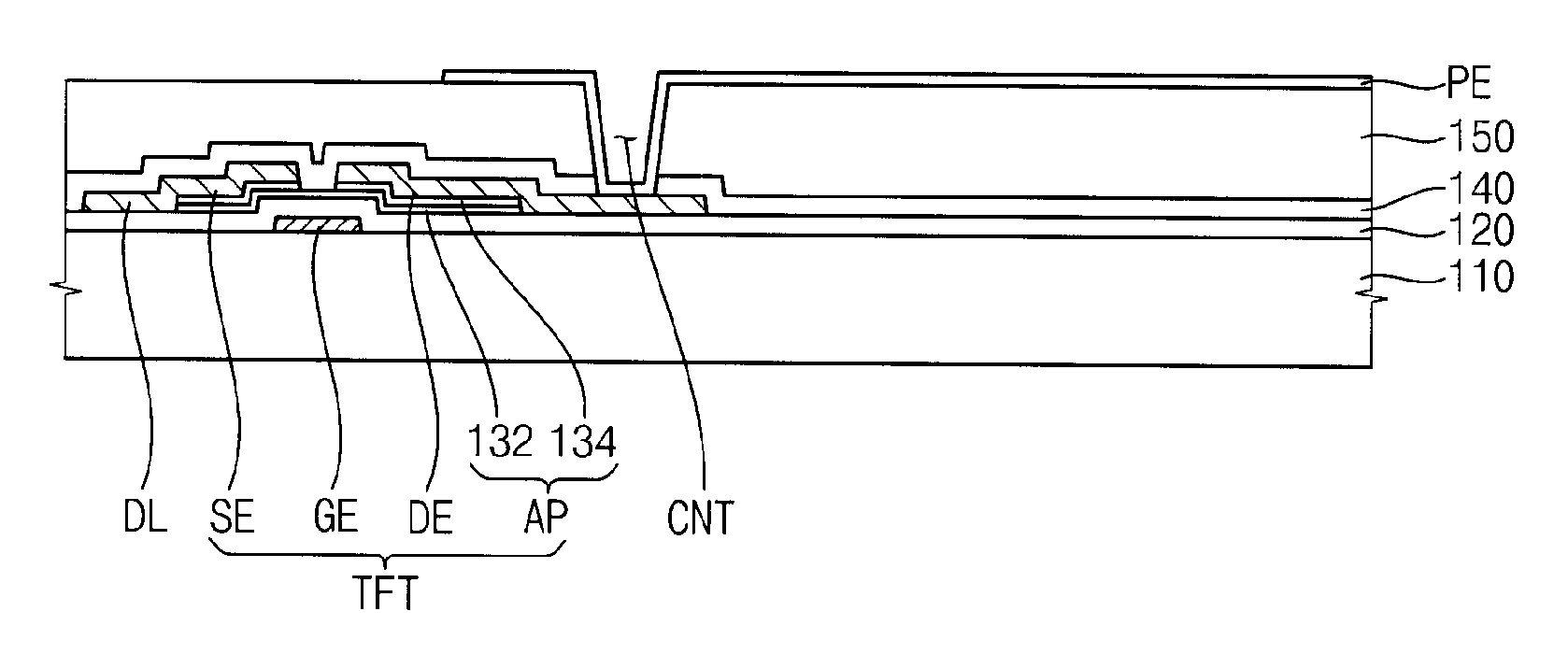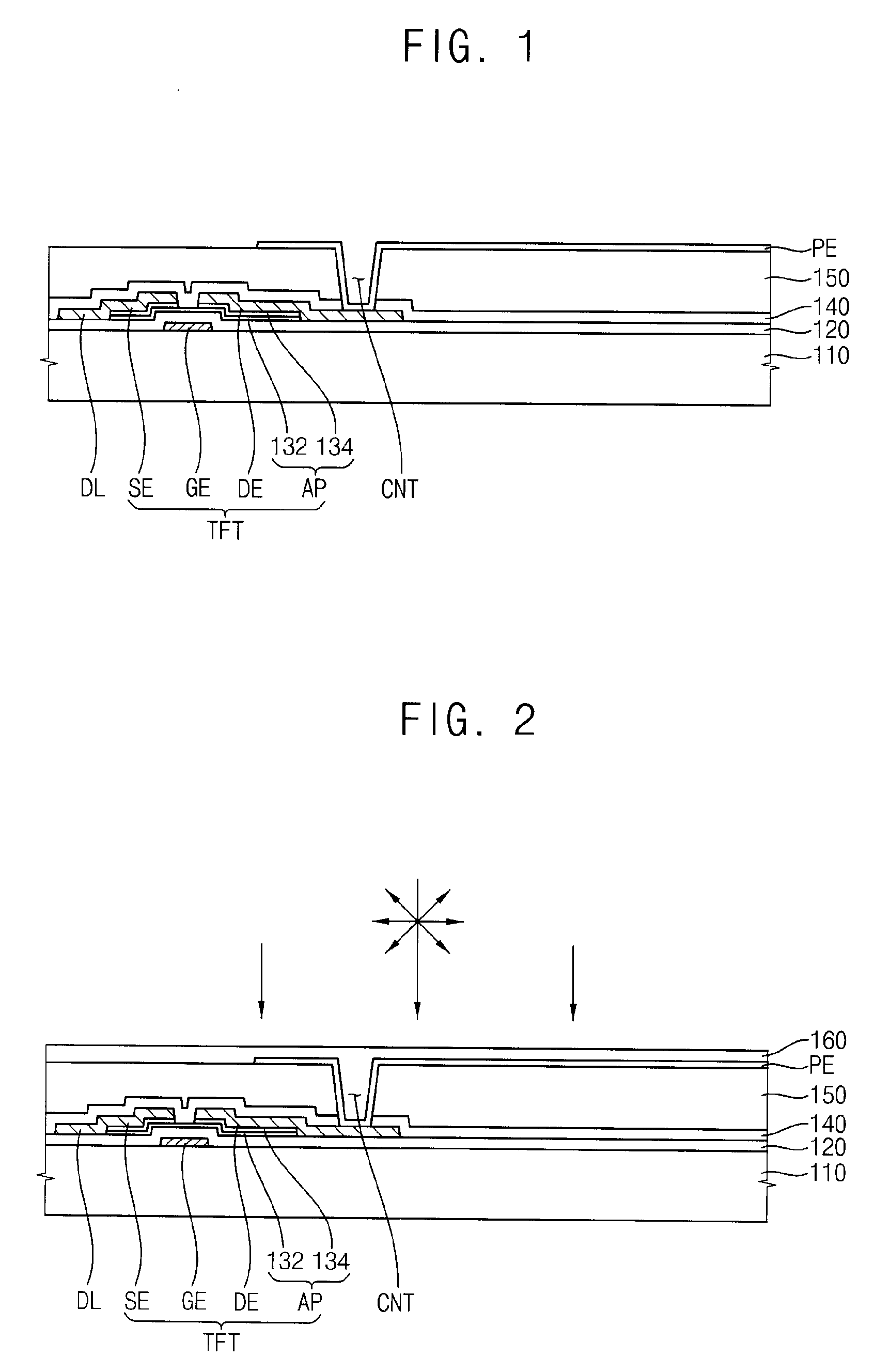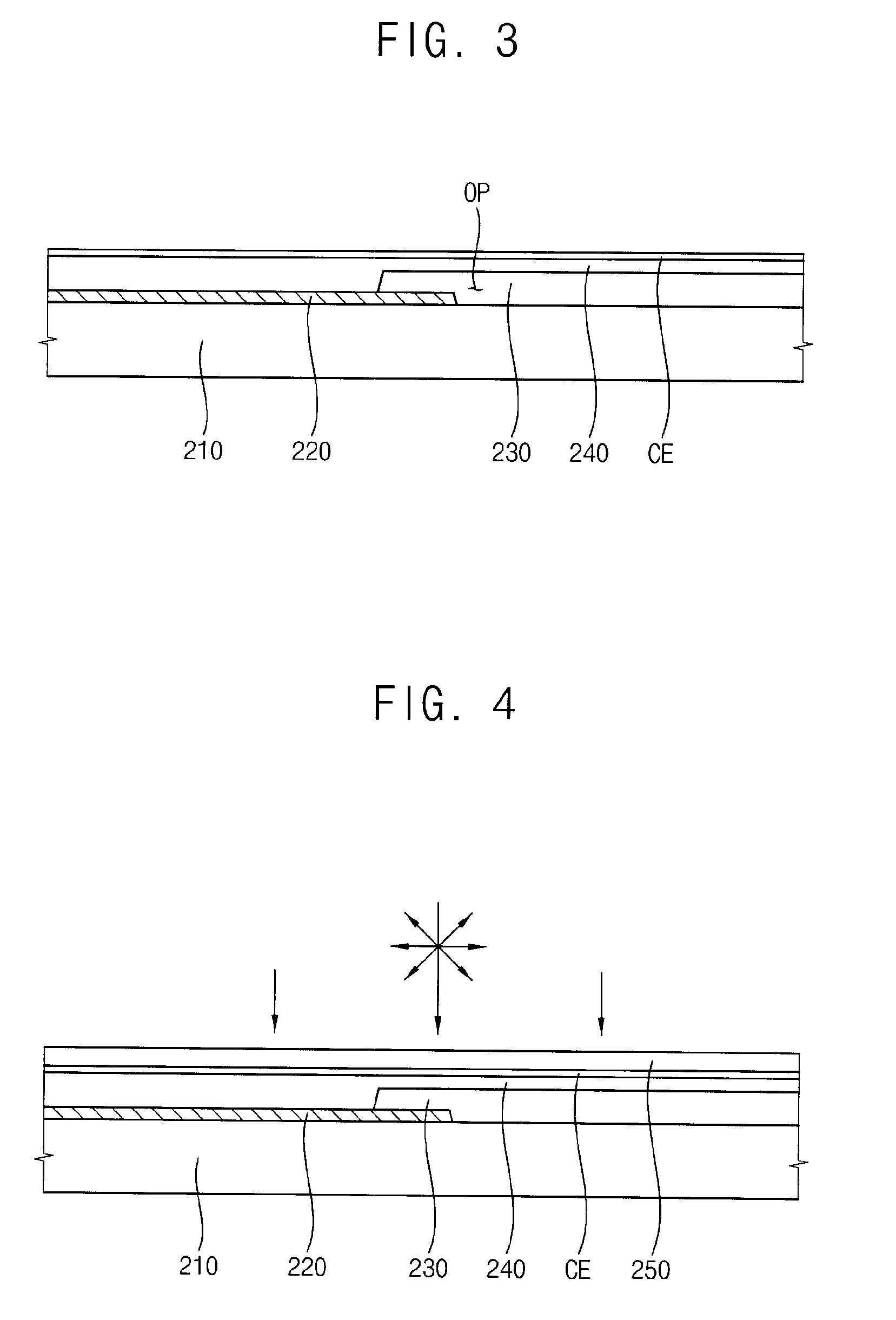Photoalignment material, display substrate having an alignment layer formed using the same, and method of manufacturing the display substrate
- Summary
- Abstract
- Description
- Claims
- Application Information
AI Technical Summary
Benefits of technology
Problems solved by technology
Method used
Image
Examples
example 1
[0059]Preparation of a Photoalignment Polymer
[0060]About 20 mole equivalents of an anhydride represented by Chemical Formula 42, about 13 mole equivalents of paraphenyldiamine, about 1 mole equivalent of a diamine compound represented by Chemical Formula 61, about 3 mole equivalents of a photoalignment monomer represented by Chemical Formula 7, and about 3 mole equivalents of methyl biphenyldiamine were mixed with dichloromethane, and this solution was slowly stirred while increasing the temperature from about 0° C. to about 100° C. After the reaction, dichloromethane and non-reactive compounds were removed in a decompressed state and dichloromethane was removed in a high-vacuum state, and thus a solid was obtained.
[0061]Preparation of a Photoalignment Material
[0062]About 6% by weight of the solid was dissolved in about 94% by weight of an organic solvent including about 40 parts by weight of γ-butyrolactone, about 30 parts by weight of N-methyl pyrrolidone, and about 30 parts by we...
example 2
[0063]Preparation of a Photoalignment Polymer
[0064]About 20 mole equivalents of an anhydride represented by Chemical Formula 42, about 10 mole equivalents of paraphenyldiamine, about 1 mole equivalent of a diamine compound represented by Chemical Formula 61, about 6 mole equivalents of a photoalignment monomer represented by Chemical Formula 11, about 3 mole equivalents of methyl biphenyldiamine, and about 2 mole equivalents of polyethylene glycol diglycidyl ether were mixed with dichloromethane, and this solution was slowly stirred while increasing the temperature from about 0° C. to about 100° C. After the reaction, dichloromethane and non-reactive compounds were removed in a decompressed state and dichloromethane was removed in a high-vacuum state, and thus a solid was obtained. A weight average molecular weight of the photoalignment of the solid was about 80,000.
[0065]Preparation of a Photoalignment Material
[0066]About 5% by weight of the solid was dissolved in about 95% by weig...
example 3
[0067]Preparation of a Photoalignment Polymer
[0068]About 20 mole equivalents of an anhydride represented by Chemical Formula 42, about 13 mole equivalents of paraphenyldiamine, about 1 mole equivalent of a diamine compound represented by Chemical Formula 61, about 3 mole equivalents of a photoalignment monomer represented by Chemical Formula 9 and about 3 mole equivalents of methyl biphenyldiamine were mixed with dichloromethane, and this solution was slowly stirred while increasing the temperature from about 0° C. to about 100° C. After the reaction, dichloromethane and non-reactive compounds were removed in a decompressed state and dichloromethane was removed in a high-vacuum state, and thus a solid was obtained.
[0069]Preparation of a Photoalignment Material
[0070]About 4% by weight of the solid was dissolved in about 96% by weight of an organic solvent including about 40 parts by weight of γ-butyrolactone, about 30 parts by weight of N-methyl pyrrolidone, and about 30 parts by wei...
PUM
| Property | Measurement | Unit |
|---|---|---|
| Photosensitivity | aaaaa | aaaaa |
Abstract
Description
Claims
Application Information
 Login to View More
Login to View More - Generate Ideas
- Intellectual Property
- Life Sciences
- Materials
- Tech Scout
- Unparalleled Data Quality
- Higher Quality Content
- 60% Fewer Hallucinations
Browse by: Latest US Patents, China's latest patents, Technical Efficacy Thesaurus, Application Domain, Technology Topic, Popular Technical Reports.
© 2025 PatSnap. All rights reserved.Legal|Privacy policy|Modern Slavery Act Transparency Statement|Sitemap|About US| Contact US: help@patsnap.com



